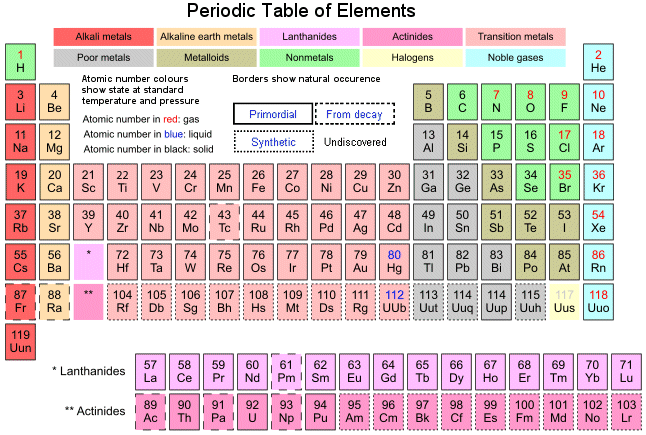
|
The human body is made up of elements in the following approximate proportions (by weight): 65% oxygen, 18% carbon, 10% hydrogen, 3% nitrogen, 2% calcium, 1% phosphorus, and 1% other elements such as potassium, sodium, iron, zinc, etc. By the number of atoms, however, the proportions are: 63% hydrogen, 24% oxygen and 12% carbon, with only tiny traces of the others. The earth’s crust is made up (by weight) of: 46% oxygen, 27% silicon, 8% aluminum, 5% iron, 4% calcium, 2% sodium, 2% potassium and 2% magnesium, plus traces of the other 84 naturally occurring elements. The air we breathe contains roughly (by volume): 78% nitrogen, 21% oxygen, 1% argon, 0.038% carbon dioxide, and trace amounts of other gases. The Sun is composed of: 75% hydrogen, 24% helium and 1% oxygen, with tiny traces of carbon, neon and iron. In fact, hydrogen and helium are estimated to make up roughly 74% and 24% respectively of all the matter in the universe as a whole, along with tiny amounts of oxygen (1.07%), carbon (0.46%), neon (0.13%), iron (0.109), nitrogen (0.1%), silicon (0.065%), magnesium (0.058%) and sulphur (0.044%). |
Back to Top of Page
Introduction | Main Topics | Important Dates and Discoveries | Important Scientists | Cosmological Theories | The Universe By Numbers | Glossary of Terms | A few random facts | Blog | Gravitational Lensing Animation | Angular Momentum Calculator | Big Bang Timeline
NASA Apps - iOS | Android
The articles on this site are © 2009-.
If you quote this material please be courteous and provide a link.
Citations | Sources | Privacy Policy
